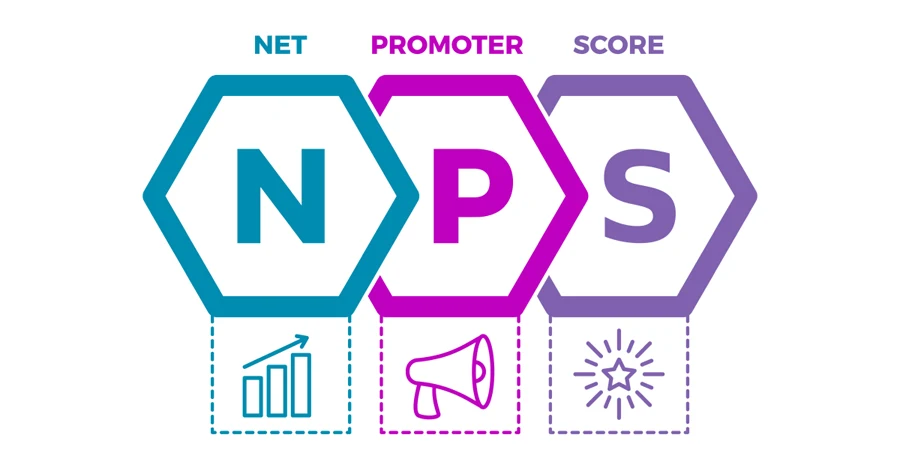Introduction
Businesses often face challenges in understanding their customers’ mindset. Despite efforts like regular communication and gathering qualitative feedback, it remains challenging to identify customers who are at risk of leaving and to determine the factors influencing their decisions.
To tackle this issue, companies need a standardized metric that helps assess customer sentiment and check if their products or services meet customer expectations. This is where the Net Promoter Score (NPS) becomes essential.

The NPS score goes beyond merely measuring satisfaction through positive reactions like a “like👍” on a product. It helps distinguish genuine customer enthusiasm from mere tolerance or indifference.
In this article, we will explain the Net Promoter Score and provide a step-by-step guide on how to calculate it for your business.
What Exactly is Net Promoter Score
The Net Promoter Score (NPS) evaluates customer experience by asking customers how likely they are to recommend a product or service to a friend, using a scale from 0 to 10. A score of 10 indicates high likelihood of recommendation, while 0 suggests the opposite (Reichheld, 2023). This measure of customer satisfaction is now a global standard, with over 69% of customer experience teams adopting NPS as a key metric to shape their policies and interactions.
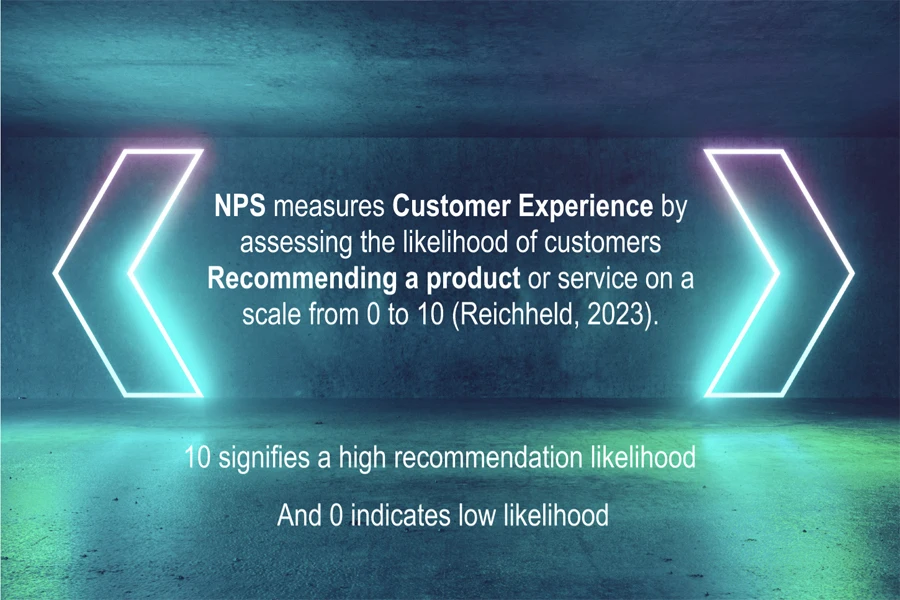
The concept of NPS was introduced by Fred Reichheld, a partner at Bain & Company, in 2003. Reichheld is widely recognized as the creator of the NPS, which includes the pivotal question of recommendation likelihood and its corresponding rating scale.
Three Types of NPS Respondents: Promoters, Passives and Detractors
To gauge if your customers truly value your product, consider whether they would recommend it to friends or colleagues. This approach shifts their perspective, making them consider whether they are willing to associate their personal reputation with endorsing the product. Customers will reflect on their confidence in the product’s ability to enhance their colleague’s work or, conversely, risk harming their personal brand.
To quantitatively assess these customer perceptions, Net Promoter Score (NPS) surveys categorize respondents into three groups: Promoters, Passives, and Detractors.
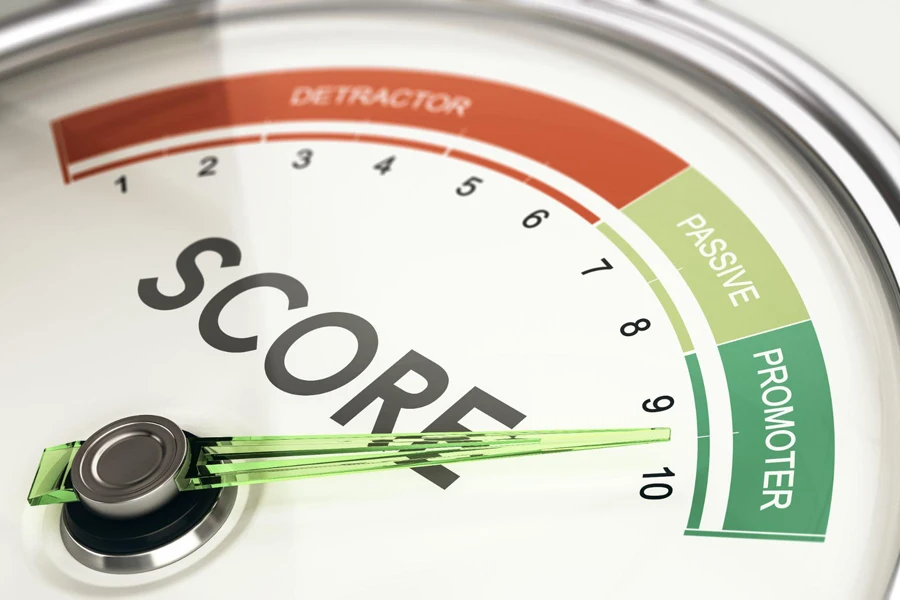
- Promoters
They are enthusiastic supporters who highly trust your product and would readily recommend your business to a friend. They are essential for fostering a positive image and generating organic growth through word-of-mouth. In the Net Promoter Score system, promoters are those who rate their likelihood to recommend as either 9 or 10. Businesses aim to maximize the number of customers within this promoter category to enhance overall customer satisfaction and loyalty.
- Passives
They are satisfied with your product but lack the enthusiasm to actively recommend it. While they might not detract from your brand, their neutrality doesn’t necessarily aid in business growth. Passives are identified as those who give a rating of 7 or 8. Engaging these customers more effectively can help convert them into promoters, thereby securing their loyalty and potentially elevating their perception of your brand.
- Detractors
They are unsatisfied customers who are unlikely to recommend your business and may even dissuade others from using your products or services. They are marked by scores ranging from 0 to 6. It’s crucial for businesses to understand the causes behind these low scores and address these issues promptly. Reducing the number of detractors can significantly improve a company’s reputation and decrease negative market feedback.
How NPS can help you make strategic decisions
The Net Promoter Score (NPS) is super useful for businesses for tons of reasons. Essentially, it lets business owners, marketers, and operators really get if their products and services are hitting the mark with their customers. Think of it as one of the killer apps to get your business on the success track.

Sometimes, getting a real read on your customers and how they stack up against what you or your competitors are doing can be tricky. NPS acts like a health check for your brand, guiding your strategy and showing you where to double down on your efforts. It’s all about helping you grow at the right pace and setting you up for what’s next. More specifically, businesses can use their NPS score to make strategic decisions to
- Help improve the experience,
- Reduce churn,
- Benchmark against competitors,
- Forecast growth.
How is Net promoter score calculated?
Calculating the Net Promoter Score (NPS) involves a straightforward process that can be broken down into a few key steps:
- Survey Your Clients: The process begins with sending an NPS survey to your current customers. You might need to offer incentives to encourage them to complete the survey. This ensures a higher response rate and more accurate data.
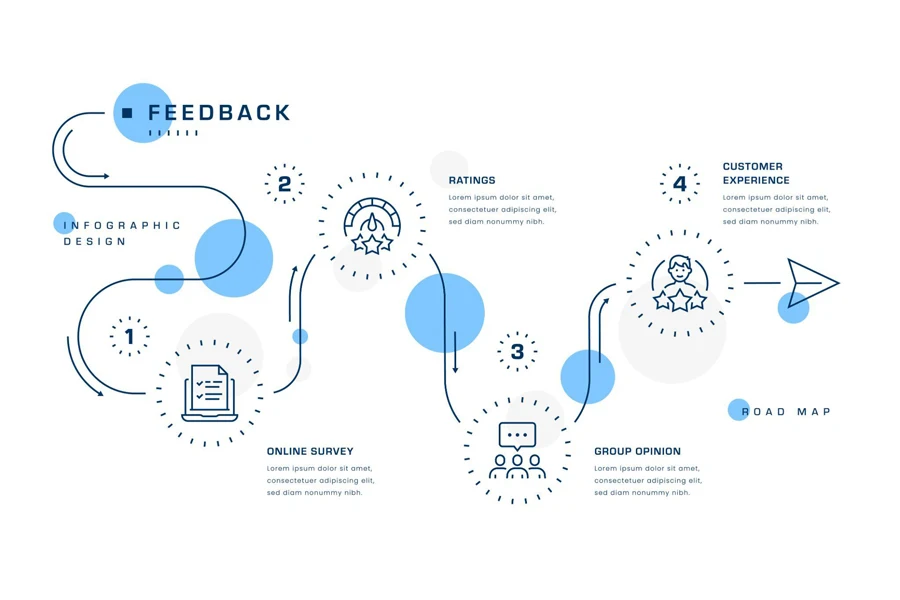
- Design the Survey Question: The core of the NPS survey is the question, “How likely are you to recommend this brand/product to a friend or colleague?” This question is essential for gauging the customer’s loyalty and satisfaction.
- Choose a Survey Tool: Various tools are available for conducting these surveys, such as Qualtrics, Satmetrix Systems, and Medallia. These platforms can facilitate the distribution and management of your survey.
- Set the Response Scale: Respondents should be given a scale from 1 to 10 to rate their likelihood of recommending the product. Here’s how the responses are categorized:
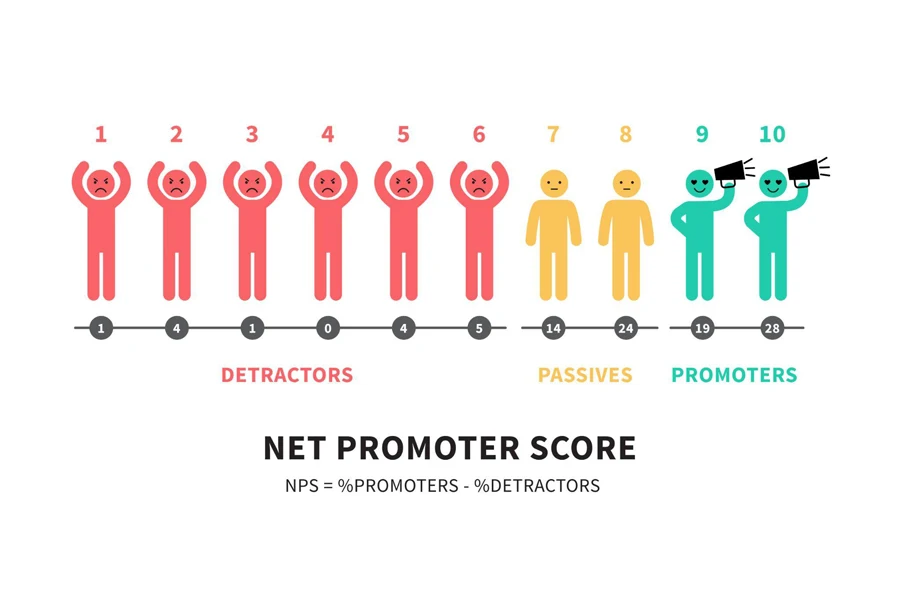
- Scores of 9-10 are labeled as ‘Promoters’—these are loyal enthusiasts who will keep buying and refer others, fueling growth.
- Scores of 7-8 are labeled as ‘Passives’—satisfied but unenthusiastic customers who are vulnerable to competitive offerings.
- Scores from 0-6 are considered ‘Detractors’—unhappy customers who can damage your brand and impede growth through negative word-of-mouth.
- Calculate the Scores: To find your NPS, calculate the percentage of customers who are promoters and detractors. Then, subtract the percentage of detractors from the percentage of promoters. The resulting figure is your Net Promoter Score, which can range from -100 (all detractors) to +100 (all promoters). This score helps you understand the overall customer satisfaction and loyalty levels towards your brand.
Understand the Meaning of NPS Score in Business.
Understanding what constitutes a good Net Promoter Score (NPS) is crucial after you’ve sent out your survey and calculated the results. Here’s how to interpret the score you’ve received:
- Interpreting Your Score: Once you’ve calculated your NPS, this score serves as an indicator of your customer experience’s health and allows you to benchmark against competitors. The NPS ranges from -100 to 100, reflecting varying levels of customer loyalty.
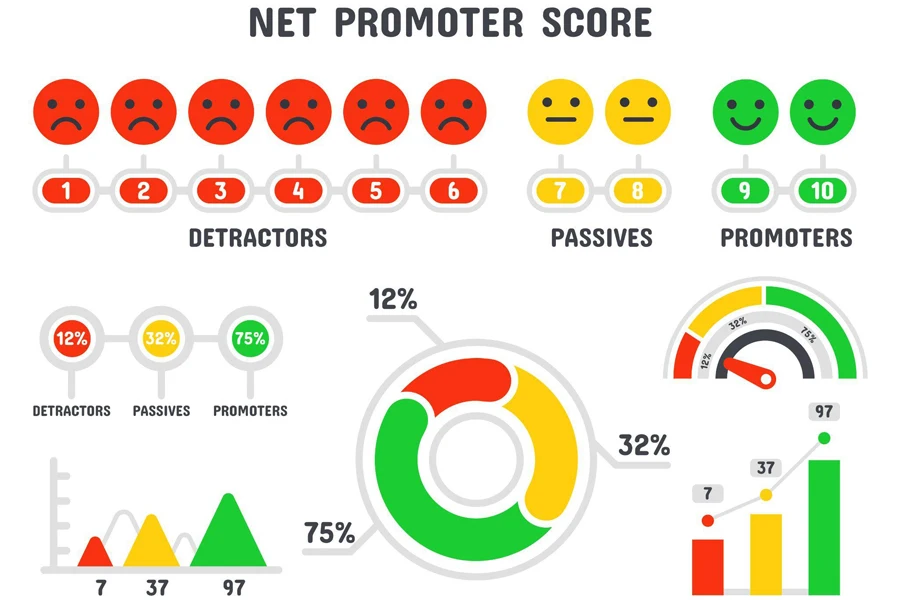
- Score Ranges and Their Meanings:
- -100 to 0: Needs Improvement. This range indicates a low score, suggesting that it’s crucial to reassess your customer experience strategy and better understand your customers’ needs.
- 0 to 30: Good. A score within this range is solid, showing that your customers are fairly satisfied. However, there is still room for improvement. This is a good opportunity to engage with your customers and find ways to enhance their experiences.
- 30 to 70: Great. If your score falls in this range, it indicates that your customers are quite happy with their experience. Your products or services are meeting or exceeding expectations.
- 70 to 100: Excellent. Achieving a score in this range is exceptional. It signifies that you are delivering a superior experience and maintaining a high level of customer loyalty, which is commendable.
Each range provides specific feedback on how your customers perceive their interactions with your business, and what steps you might need to take next to maintain or improve these perceptions.
Final Words
In conclusion, the Net Promoter Score (NPS) is more than just a numerical expression; it’s a critical gauge of customer loyalty and satisfaction. By understanding how to calculate and interpret this score, businesses can identify areas of success and opportunities for improvement. Whether your score indicates a need for significant changes, or it celebrates your exceptional service, each range provides valuable insights into how your customers perceive their interactions with your brand. Remember, the goal is not just to score well, but to use these insights to foster a culture of continuous improvement, ensuring that every customer interaction contributes positively to your business growth. Embrace the feedback, engage with your customers, and strive for excellence—it’s the surest path to sustained success. For the benefit of applying NPS to your business, and the way of improving is coming next blog, please give a Like👍, Comment📑, and Subscribe!
Reference list:
Reichheld, F. F. (2023). The one number you need to grow. Harvard Business Review. http://hbr.org/2003/12/the-one-number-you-need-to-grow
